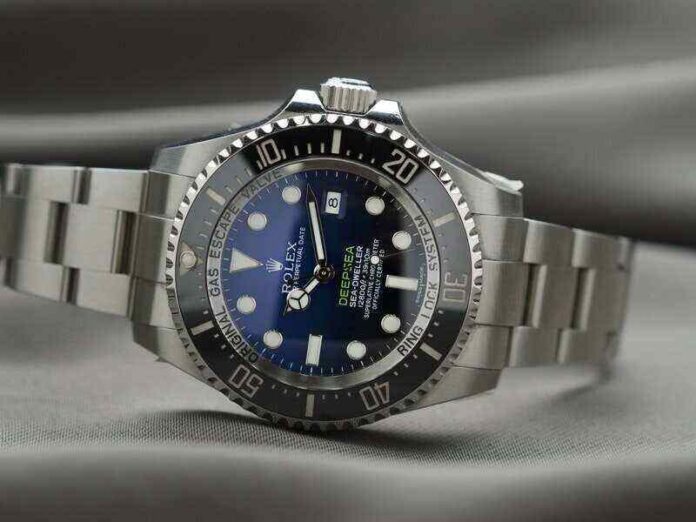
There is a good difference between men’s and ladies’ watches. Although there are unisex brands, we tend to see some ladies wearing a timer that has the features of men’s watches. These watches come in bigger sizes while that of the female counterpart are usually available in smaller sizes.
Aside from this, everything else goes down to regular gender rules. Men’s watches offer more use than women’s watches which come in more colors and crystal studs. Gender-neutral is gradually taking over and wearing just any timepiece is becoming mainstream fashion.
Regardless, as a watch lover, you should be able to differentiate between men’s watches and women’s watches. Find below eight differences between both kinds of watches.
1. Strap Materials
Women’s watch materials fall into two types – band and bracelets. The bracelet is usually a watch with metal links while the band is usually one with a continuous band. So when you see a glossy watch with slender straps, which could also be made of fabrics and is compressed around the wrist, then you’re looking at a ladies wristwatch.
Because of how tender the steps of a timepiece can be, one must have good jewelry storage ideas that can protect and help it last longer. And there are several DIY storage ideas to help with this.
2. Wrist Size
Watches made for women are usually smaller. While the circumference is usually bigger for men. Some men’s watches are long enough to accommodate a bigger wrist.
It is also important to note that men’s wrist bones are naturally larger, as such, it makes it easy for watches to sit instead of sliding off when the arm is lowered.
3. Width of Strap
This always gives a good indicator that a watch belongs to either a man or a woman. Lady’s timepieces usually have thin straps that are more common while men have larger straps. Women usually pay attention to the colors of the straps and how they fit in with their attires and other accessories.
These fine details are usually important for the female gender. And it fits in with the desire for subtle elegance in women’s watches rather than the rugged showmanship of men’s watches.
4. The Size of the Face
This is the dial area covered by a big glass front of the watch. The men’s own tend to be bigger and larger than that of the women and the hands are more prominent.
It also has a wiggle room that indicates if it’s for a man or woman. Just like the straps, a smaller watch means it is for ladies while one with a wide dial circumference means it belongs to the men.
5. The Weight
Generally, men’s watches are usually heavier than ladies’. This is a very key feature to note when purchasing a timer for a woman because some women may not be comfortable carrying a heavy piece on their wrist all day.
On the other hand, some men opt for a women’s watch simply because it is light on the wrist. So it all goes down to individual preferences.
6. Numbers and Types of Features
In recent times, there has been an inclination to equip men’s wristwatches with an arrangement of features that are techier – from GPS to solar charging. Men’s watches are also made to catch the eye specifically rather than subtly complementing a style or attire.
Women’s watches seem to have more designs and ornamental features such as personalized cravings or diamonds. They tend to be more flashy and subtle on the wrist.
A possible reason is that ladies do not want excessive attention to their timepieces at the expense of other accessories which are typically flashy. Nevertheless, there was a time women opted more for bigger and more conspicuous watches like the menfolk.
7. The Movement and Style
One is often faced with the choice of buying either quartz or mechanical type of watch. These watches come with designs and patterns of movements that identify the appropriate gender.
A woman considers her lifestyle and opts for timepieces that go with it. Watchmakers consider this when manufacturing watches as they provide the female folks with something fashionable and sleek while that of the men seems to have more bold features.
Style is another major factor to consider when purchasing a women’s watch. While, in the past, women’s watches were primarily made with an upscale dress style in mind. But today there are also many other types of watches available in women’s ranges.
8. Colors
Watchmakers understand that some women place a lot of value on colors. Women’s watches are sometimes made in such a way that different matching colors can go with different attires.
But this is quite different for the men as they mostly opt for bold colors. Men would most likely go for stainless steel, black straps, or brown. Though there are other available colors these are the most common.
On the flip side, women’s watches come in almost any color you want. Whether it is yellow or purple, you’ll certainly see it. Neutral tones like silver, gold, black, white are often an excellent option for both genders, especially if you would want to pair them with a wide range of outfits.
If you are wondering if a lady can wear a man’s watch, know that some women usually prefer the rugged and colorful looks of the men’s watch. In the end, individual preference wins.
It is however rare for a man to pull up a lady’s watch on his wrist. What you will mostly find are unisex watches such as sports watches, which are easily interchangeable between genders.
Conclusion
When purchasing a wristwatch, ensure you observe these differences and buy accordingly. Men hardly wear female watches and women equally don’t wear men’s watches, except on a few occasions. Where it seems one wearing a timepiece belongs to the opposite gender, there’s a high chance you’re looking at a unisex watch.

